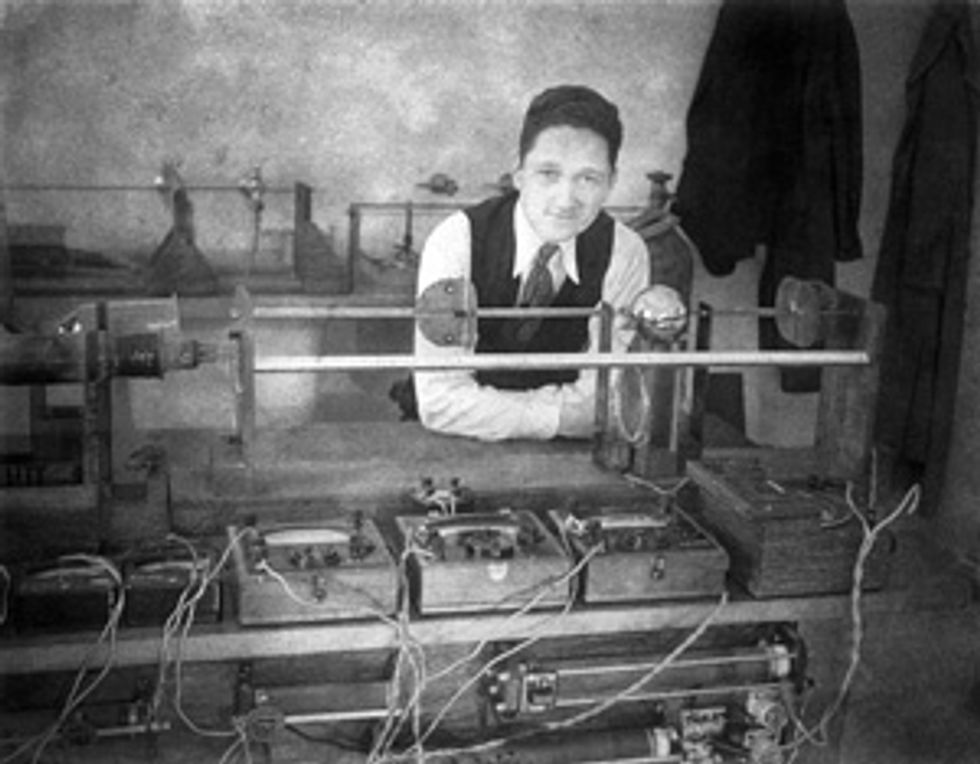Andrei Haeff and the Amazing Microwave Amplifier
How history forgot this pioneer of the traveling-wave tube
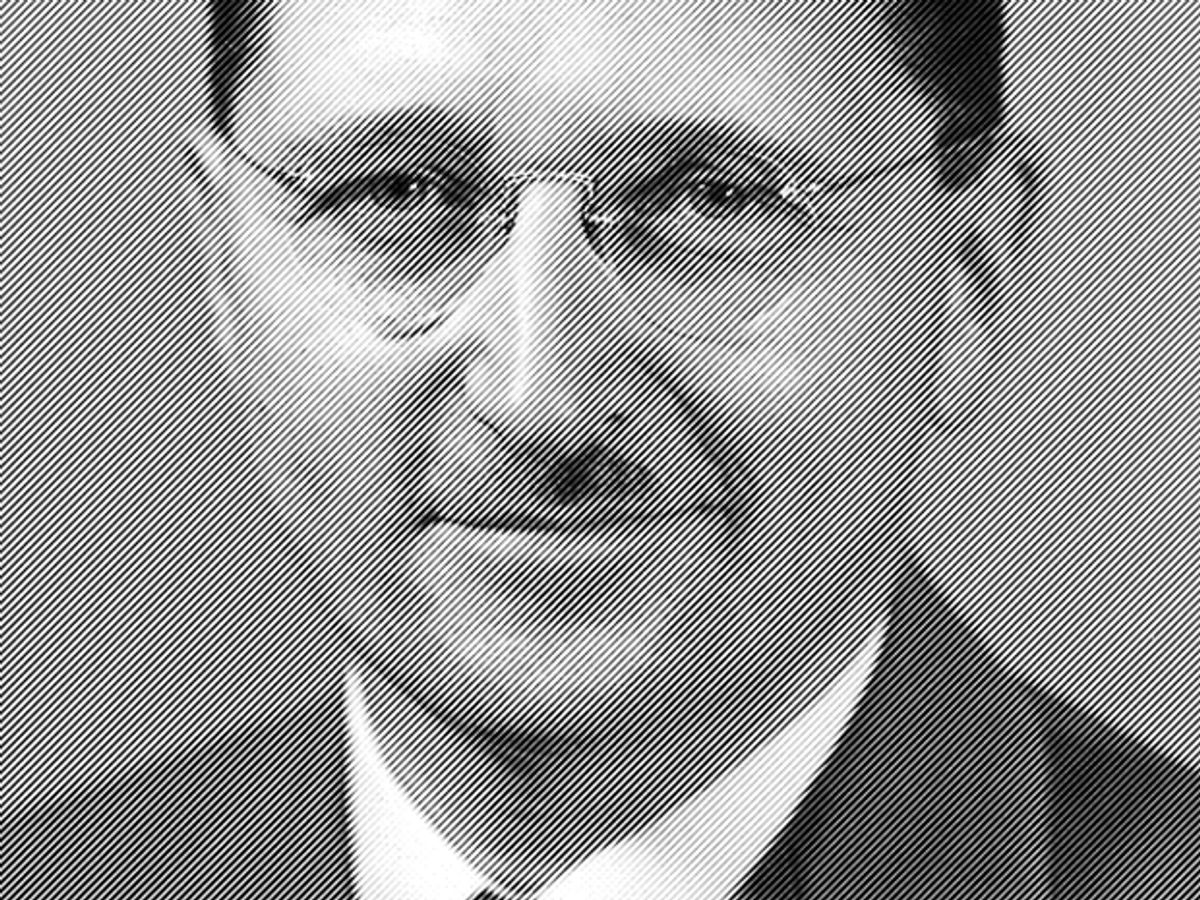
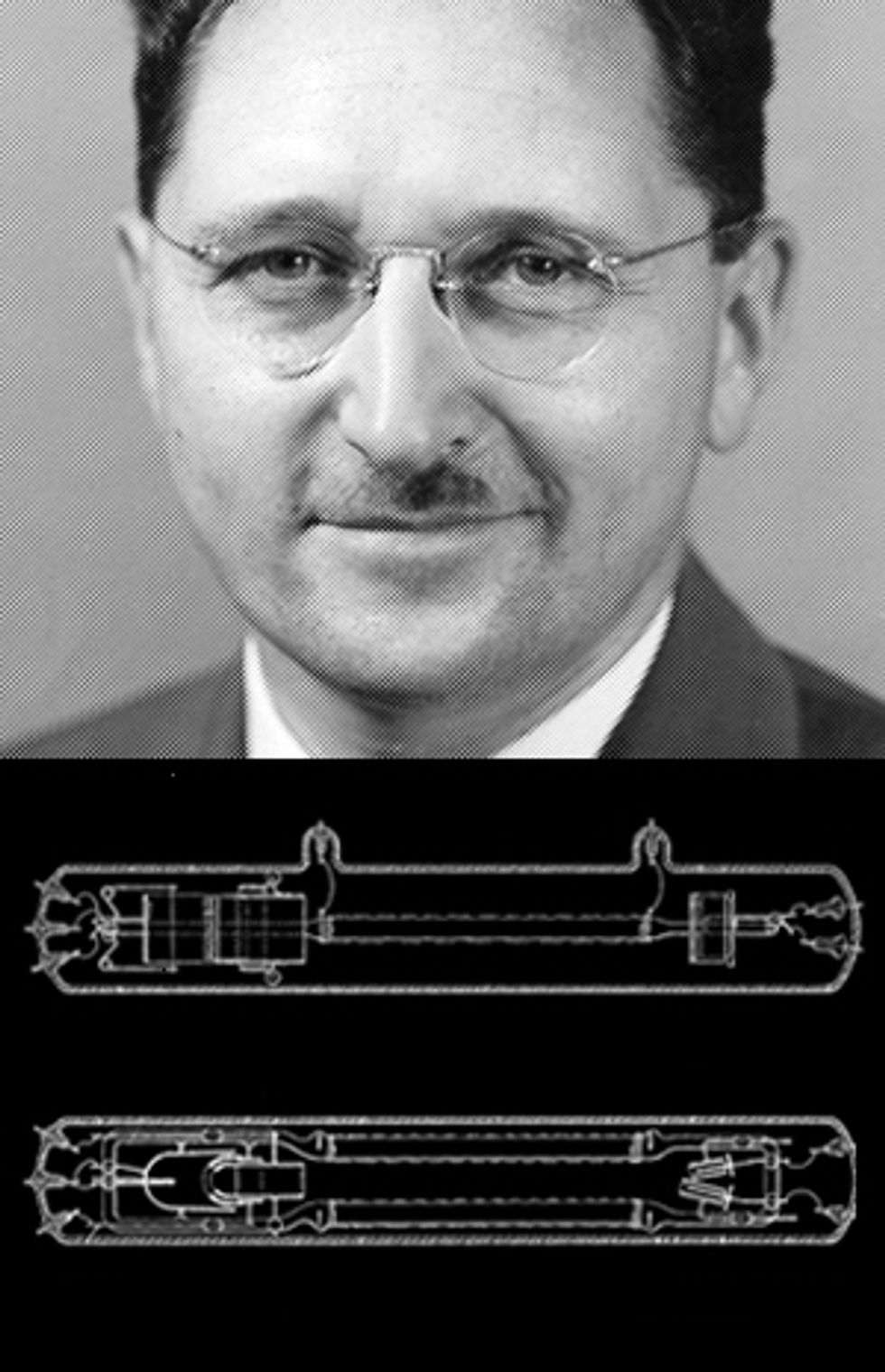
An intense-looking young man stepped out of his engineering lab at Caltech to watch what was happening. In the university’s nearby high-voltage laboratory, gigantic bolts of electricity were leaping eerily from outlandish equipment. It was 1931, and a Hollywood crew was filming the spark-filled special effects for the creation scene in Boris Karloff’s first Frankenstein movie. The serious-minded young engineer loved cinema, but as he walked back to his bench in the Kellogg Radiation Laboratory, he probably had no idea that a new kind of vacuum tube he was working on would in time revolutionize the movie business, enabling TV broadcasters to bounce Frankenstein and countless other films off satellites straight into people’s homes.
The young man was Andrei “Andy” Haeff (father of coauthor Andre Haeff), and the device he was working on was an early form of what was later called the traveling-wave tube. This rather exotic type of vacuum tube was a key component in early telecommunications, radar, and television-broadcast systems. In 1952, for example, the British Broadcasting Corp. used the technology to forge a chain of microwave links between Manchester in England and a broadcasting station midway between Glasgow and Edinburgh, allowing the company to distribute television programming to Scotland without stringing lengthy cables. But it was the advent of communications satellites that allowed the low-weight, power-efficient traveling-wave tube to really shine. Nowadays everybody’s favorite signals—broadband, phone, TV—can reach almost anywhere on the globe, thanks to satellite-based traveling-wave tubes.
Despite the importance of this device, the origins of the traveling-wave tube are little known. Most authorities credit an Austrian architect named Rudolf Kompfner with inventing it in England during the Second World War. Indeed, textbooks that cover the topic tend to acknowledge only Kompfner.
In fact, though, the traveling-wave tube has much earlier roots. Its originator was not Kompfner but the shy and intense Andy Haeff. And so it’s worth revisiting the fundamental contributions that Haeff made to this important technology and to explore how it was that he came to be written out of this slice of technological history.
The story begins in California in 1931. Haeff had arrived in the United States only a few years before from China, where he had moved with his parents and brothers and sisters in 1920, not long after the Bolshevik revolution in his native Russia.
Haeff had recently obtained a master’s degree at Caltech and was doing research that he hoped would soon earn him a doctorate. His thesis subject was microwave electronics, which in that era represented a high-tech frontier. Nobody knew how to effectively amplify microwave signals, which were too high in frequency for standard vacuum tubes to handle.
The young engineer began working on a tube in which a high-frequency radio wave corkscrews around, following a helical copper electrode, while electrons projected in a beam flow parallel to the axis of the helix. Moving around the helix reduces the wave’s progress along the axis of the tube enough to make it match the speed of the slower-moving electrons, enabling a strong interaction that draws energy from the beam and amplifies the wave. Haeff’s prototype used two parallel helical electrodes with an electron beam running in between them. When he filed his first patent on the tube in October 1933, he used the term “traveling wave” to refer to the high-frequency wave moving around the helix. His was the first example of what later came to be called a helix traveling-wave tube.
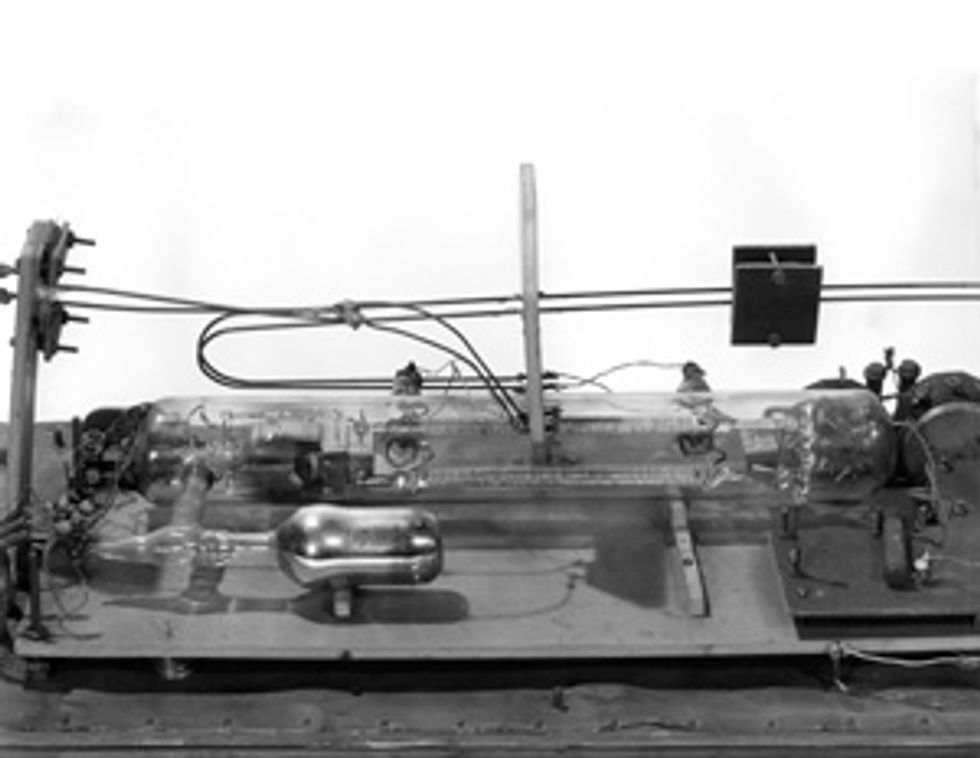
Haeff got the idea for this novel tube after watching surfers on Santa Monica Beach and realizing that the velocities of the board and the wave had to match for a surfer to use the wave’s energy effectively.
Haeff obtained his Ph.D. in 1932, but he continued working on his revolutionary new tube as a research fellow in Caltech’s electrical engineering department. The few accounts of the origin of the traveling-wave tube that mention Haeff at all typically state—quite incorrectly—that he overlooked the use of the tube as an amplifier. In fact, when Haeff applied for a patent on his design, he emphasized three ways of using the tube, including as a microwave signal detector and to “amplify…extremely high radio frequencies.” So there’s no doubt that he recognized the ability of his tube to amplify frequencies that lay beyond the upper limits of conventional vacuum tubes.
What’s more, Haeff’s new tube was not just a paper design: Shortly before filing his patent application, he used a traveling-wave tube to build a portable radio transmitter and receiver operating at 750 megahertz—much higher than other radio equipment of the time.
In March 1934, Haeff left Caltech to join RCA’s research and engineering department in Harrison, N.J. The head of Caltech, the physicist Robert A. Millikan, acting on behalf of the university’s governing body, granted him all rights to his invention. Haeff soon sold RCA the patent rights to the traveling-wave tube, together with a working prototype, for the then tidy sum of US $12,000—approximately $200,000 in today’s money. Later, in 1936, RCA applied for a second patent on Haeff’s design. The company did not, however, permit Haeff to develop the invention further, wanting him to concentrate on developing miniature tubes and circuits for use in television receivers.
The traveling-wave tube was subsequently rediscovered not once but twice. The first time was in 1940, when Nils Lindenblad, an antenna specialist at RCA, filed for a patent on an improved traveling-wave tube. This was six years after Haeff sold RCA the rights to his 1933 patent. It’s hard to imagine that Lindenblad was unaware of Haeff’s earlier work: The same RCA patent attorney, Harry G. Grover, filed both Lindenblad’s patent and RCA’s 1936 patent on Haeff’s traveling-wave tube.
Haeff’s Other Tubes
This prolific engineer kept inventing for decades
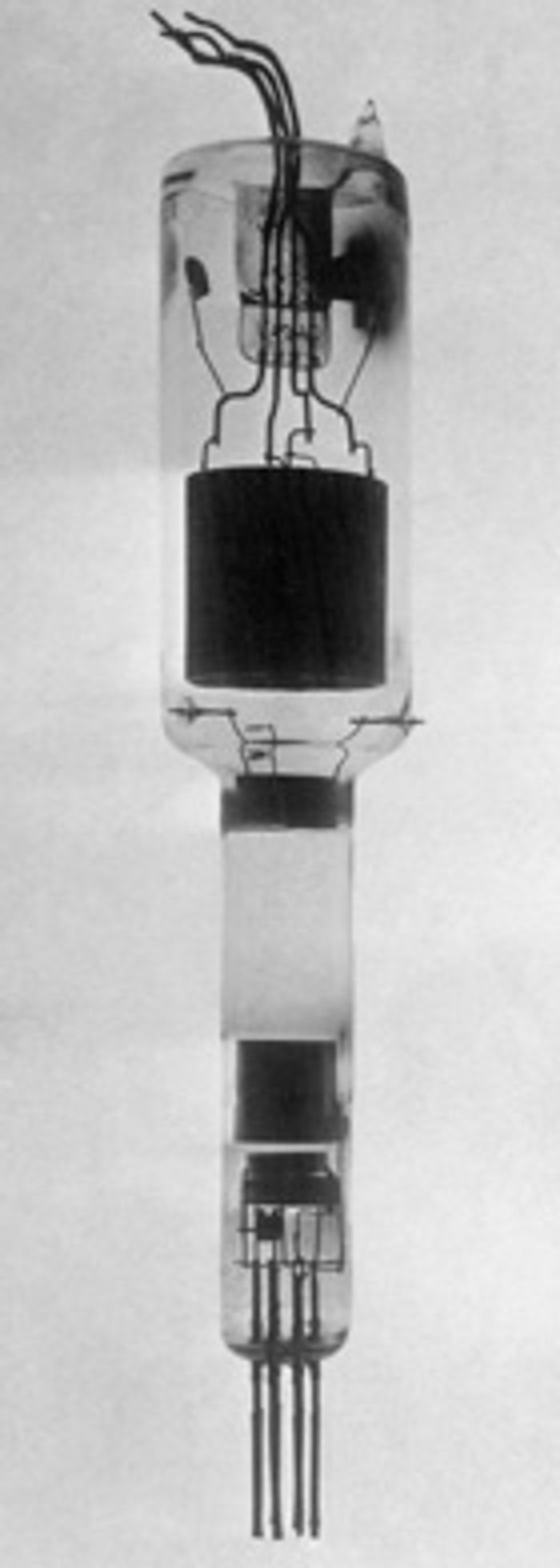
How Lindenblad, who was not a tube designer, came to be investigating helical electrodes is unclear. Although both he and Haeff were employed by RCA at the time, their labs were about 100 kilometers (roughly 60 miles) apart, and we have no evidence that they ever met.
One strong possibility is that Fred Kroger, an associate of Haeff’s from Caltech, may have steered Lindenblad to Haeff’s patents. In 1933 Kroger had helped Haeff build the microwave transmitter and receiver he used to demonstrate the capabilities of traveling-wave tubes. And when Haeff moved from California to New Jersey, it was Kroger who transported the prototype traveling-wave tube there in the trunk of his car. He also had a hand in the lucrative sale of Haeff’s patent rights to RCA. Kroger, like Lindenblad, worked at RCA Communications [pdf] in Rocky Point, N.Y., and they were both key players in RCA’s early forays into television broadcasting. Indeed, it was for this purpose that Lindenblad revived the traveling-wave tube.
Within a few years the traveling-wave tube was discovered a third time—at the University of Birmingham, in England. In 1940, physicists at a special laboratory set up by the British Admiralty had developed a powerful tube for generating microwaves: the multicavity magnetron. The magnetron is said to have had more influence on the course of the Second World War than any other single invention, because it was key to constructing small, powerful, accurate radar sets, ones compact and light enough to be fitted into airplanes.
When Kompfner joined this laboratory in 1941, he worked by day on magnetrons and klystrons—another kind of tube for amplifying microwaves—and in the evenings on various designs of his own, including a traveling-wave amplifier. Kompfner built his first traveling-wave tubes in the Birmingham lab, winding the long copper helices himself on a lathe. The results were good, and the British Admiralty lodged a patent application on his behalf in June 1944.
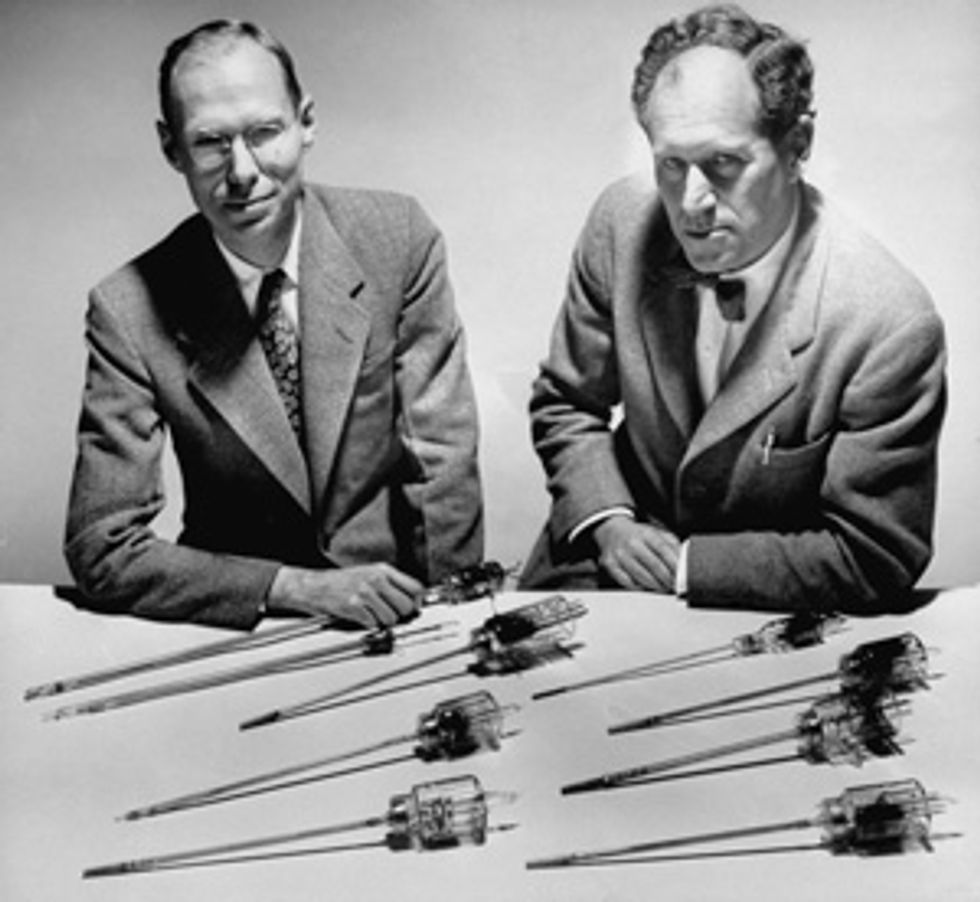
Kompfner described the form of traveling-wave tube that became the prototype for future commercial versions in a 1946 article in Wireless World. His tube, though, did not differ essentially from Lindenblad’s less well-known design, for which a U.S. patent had in fact already been granted in October 1942—ironically, about the same time Kompfner was rediscovering the traveling-wave tube.
While the tube Kompfner described in Wireless World made use of the same basic principles as Haeff’s, it was a distinct improvement on Haeff’s design, where the electron beam ran close to the circumference of the helix. Like Lindenblad in his earlier design, Kompfner used a precision electron gun, unavailable at the time of Haeff’s pioneering work, to direct the beam along the central axis right inside the helix. That method resulted in much higher amplification because it brought different physical principles into play—velocity modulation and electron bunching.
Those phenomena were discovered and investigated during the second half of the 1930s—initially by the husband-and-wife team of Oskar Heil and Agnes Arsenjewa-Heil—making Lindenblad’s and Kompfner’s designs possible. And indeed, Haeff was one of the first to harness these principles, in his 1939 inductive-output tube [see “Haeff’s Other Tubes”].
Kompfner recounted his early work on the traveling-wave tube in a 30-page pamphlet published in 1964, The Invention of the Traveling Wave Tube. In it, Kompfner revealed that the crucial idea of using a helical electrode was not his own. While attempting to design a high-frequency oscilloscope, he had realized—like Haeff before him—that if an electric field could be slowed down from the speed of light to the speed of an electron beam, the field and the beam could interact. But Kompfner knew of no way of achieving this reduction in velocity. In September 1942, he discussed his high-frequency oscilloscope with other tube experts at Birmingham, and “the suggestion was made to use a helix,” Kompfner stated.
Kompfner first experimented with traveling-wave tubes that had the electron beam running outside the helix, as Haeff had done a decade earlier, the so-called deflection type of traveling-wave tube. It was not until April of 1943 that Kompfner landed on the same idea as Lindenblad—of using a precision gun to shoot a stream of electrons down the center of the helix. In November of that year, Kompfner demonstrated that this approach boosted amplification.
Kompfner wrote a great deal about the circumstances of his “discovery” of the traveling-wave tube, most notably in his 1964 pamphlet. But in these extensive writings he never so much as mentioned Haeff’s earlier work—yet the U.S. patent on Kompfner’s traveling-wave tube design, granted in 1953, did cite Haeff’s prior patent.
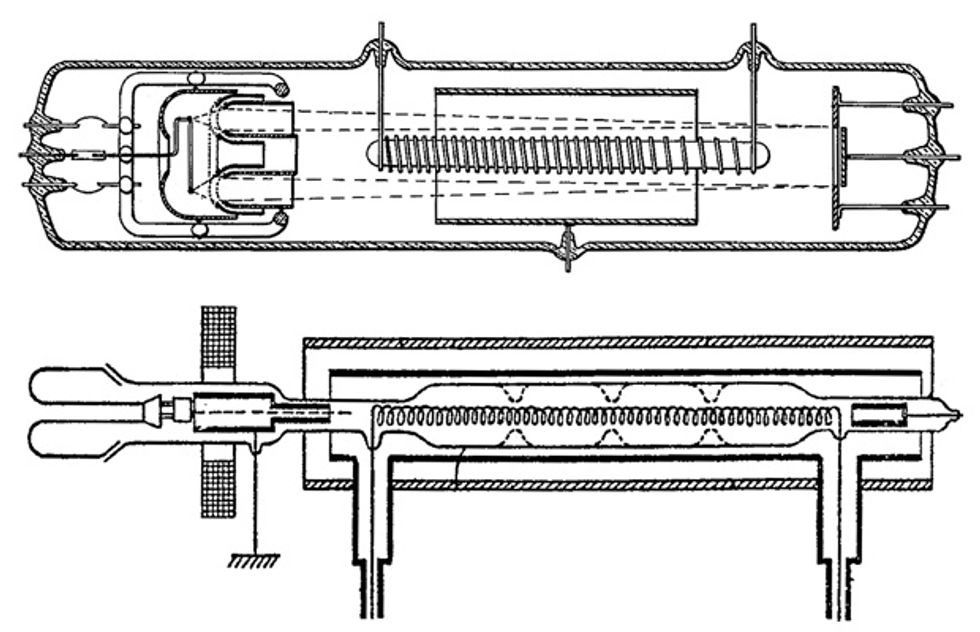
Although he was silent about Haeff’s early traveling-wave tube, Kompfner emphasized the importance of Haeff’s work on velocity modulation and electron bunching. Remarking in 1949 that the early attempts of Heil and Arsenjewa-Heil were “not really successful,” Kompfner continued: “Then, in the space of a few months (1938–39), there appeared a series of papers by American workers, notably Haeff, [William] Hahn and [George] Metcalf, [Russell] Varian and [Sigurd] Varian, [William Webster] Hansen and [David] Webster, which transformed the situation.”
Haeff was by nature modest and reluctant to blow his own horn. Although far from pleased that his early contributions were being overlooked, he didn’t object publicly. But in a summary of his life’s work, composed in about 1950, he wrote: “It is of interest to note that the operation of the recently announced ‘revolutionary’ device known as the ‘Travelling Wave Tube,’ is based on the principle first disclosed by me in my patents No. 2,064,469 and 2,233,126 which describe the fundamental ideas of the travelling wave tube.” But he did little beyond that to associate himself with this remarkable device, which was to become immensely important after John R. Pierce brought the concept of the traveling-wave tube to Bell Labs, archrival of RCA, soon after meeting Kompfner in Britain in 1944. In 1951, Kompfner himself joined Bell Labs as Pierce’s protégé.
Pierce, an engineer who is perhaps most famous now for coining the word transistor in 1948, rose to become an executive director at Bell Labs. And his relationship with Haeff was cordial enough for him to have dined at the Haeff home on one occasion in the early 1950s. Nevertheless, Pierce relentlessly pressed Kompfner’s—and, indirectly, Bell Labs’—claim to priority. He wrote in 1956: “About the origin of the traveling-wave tube, I will say only that it was invented in England during the war by an Austrian architect, Rudolf Kompfner, who had always wanted to be a physicist.”
Pierce’s definitive 1950 textbook Traveling-Wave Tubes did not so much as mention Haeff’s contribution. In Europe, on the other hand, Haeff’s early work on the traveling-wave tube featured in a French textbook, published in 1951. Ten years later, Pierce told Haeff in a letter of his plans to write a historical article about microwave-tube development that would refer to Haeff’s “use of traveling waves with electron beams back around 1935.” But Pierce, who died in 2002, never did author an article setting the historical record straight. And only a few specialists realized the importance of Haeff’s early work, like Victor Granatstein at the University of Maryland, who wrote in 2000 that Haeff “made an indispensible contribution to the development of the helix TWT” (traveling-wave tube), noting that the “key” idea of using a helix to slow a high-frequency wave to the same speed as an electron beam was “revealed for the first time in Andrew Haeff’s patent.”
In 1950 Haeff, who had left RCA in 1941 to work on radar at the U.S. Naval Research Laboratory, joined the research and development laboratories of the rapidly expanding Hughes Aircraft Co. in Culver City, Calif. There he set up and directed the Hughes Electron Tube Laboratory, eventually becoming a vice president of Hughes and director of research. Haeff’s lab quickly began developing advanced versions of the traveling-wave tube.
The launch of the Russian Sputnik satellite in October 1957 gave him even more impetus for doing so, as communication via satellite became the new frontier for radio and TV engineers. Researchers at Bell Labs proposed launching an orbiting relay station and using a network of ground-based stations to track it continuously as it moved across the sky. In a 1945 issue of Wireless World, the science fiction writer Arthur C. Clarke had described his idea of placing communications satellites in stationary orbits, which would avoid the tracking problems associated with satellites that move relative to Earth’s surface. When Hughes engineer Harold Rosen suggested that the company develop such a stationary satellite, many of his colleagues were skeptical, but Haeff convinced the general manager, Lawrence “Pat” Hyland, that a stationary satellite was preferable to the Bell Labs scheme.
Haeff established a special task force to study the problems of commercial satellite communication. In October 1959 the task force recommended that Hughes proceed at lightning pace with a “major space program…under tight security.” The aim was to place a simple broadband repeater satellite into an approximately stationary orbit above the Atlantic.
The task force further advocated developing a special lightweight, high-efficiency traveling-wave tube, weighing around 1 pound—about one-twentieth the weight of Hughes’s standard version. This tube would form “the heart of the proposed satellite electronic system,” amplifying the signals the satellite picked up before relaying them back to Earth at a different frequency.
Hughes’s Syncom became the world’s first geosynchronous communications satellite, successfully reaching orbit in 1963. This launch was just a NASA-sponsored test, but it soon gave rise to the first commercial communications satellite, placed in orbit in 1965, the Syncom-based Early Bird, also known as Intelsat I. Early Bird’s success ultimately allowed Hughes to dominate the manufacture of communications satellites for many years to come.
It must have been an occasion for pride—and some mixed feelings—for Haeff when the device he pioneered in his twenties, one rarely associated with his own name, successfully carried a multitude of human voices across space.
This article originally appeared in print as “The True History of the Traveling Wave Tube.”
About the Authors
Jack Copeland is a professor of philosophy at the University of Canterbury in Christchurch, New Zealand. Andre Haeff is a retired physician.
